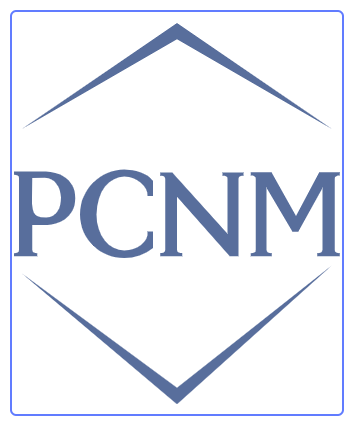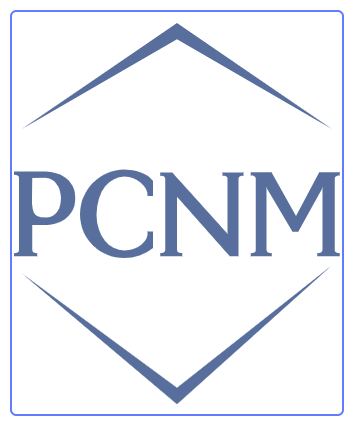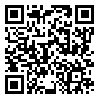
Preventive Care in Nursing and Midwifery Journal

Volume 15, Issue 1 (1-2025)
Prev Care Nurs Midwifery J 2025, 15(1): 37-45 |
Back to browse issues page
Ethics code: IR.IAU.SHIRAZ.REC.1403.282
Download citation:
BibTeX | RIS | EndNote | Medlars | ProCite | Reference Manager | RefWorks
Send citation to:



BibTeX | RIS | EndNote | Medlars | ProCite | Reference Manager | RefWorks
Send citation to:
Naziri A, Hooman F. The role of functioning and emotional expressiveness in predicting anxiety in adolescent girls. Prev Care Nurs Midwifery J 2025; 15 (1) :37-45
URL: http://nmcjournal.zums.ac.ir/article-1-958-en.html
URL: http://nmcjournal.zums.ac.ir/article-1-958-en.html
Department of Psychology, Shi.C., Islamic Azad University, Shiraz, Iran , n.psyhoman@gmail.com
Abstract: (777 Views)
Background: Anxiety is a common mental health issue in adolescence, more frequently affecting girls, emphasizing the need to examine family factors such as family functioning and emotional expressiveness.
Objectives: This study aimed to evaluate how family functioning and emotional expressiveness predict anxiety levels in adolescent girls.
Methods: This descriptive-correlational study analyzed a population of female adolescents enrolled in the first year of high school (grades 7-9, ages 13-15) in Shiraz during the 2023-2024 academic year. A sample of 252 participants was selected using a multi-stage cluster sampling method. Data were collected through the Children’s Anxiety Scale, the McMaster Family Assessment Device (FAD), and the Emotional Expressivity Questionnaire (EEQ). The data were analyzed with Pearson’s correlation coefficient and stepwise regression using SPSS version 26.
Results: Findings revealed a significant negative correlation between family functioning and anxiety (r=-0.51, p<0.001), as well as between emotional expressiveness and anxiety (r=-0.46, p<0.001). Both family functioning and emotional expressiveness together explained 34% of the variance in anxiety (R²=0.34), with family functioning contributing more significantly.
Conclusion: This study finds that family functioning and emotional expressiveness are important predictors of lower anxiety levels in adolescent girls, collectively accounting for a significant portion of the variance. Family functioning seems to have a more vital influence, indicating that interventions focused on family dynamics could help reduce anxiety in this group.
Objectives: This study aimed to evaluate how family functioning and emotional expressiveness predict anxiety levels in adolescent girls.
Methods: This descriptive-correlational study analyzed a population of female adolescents enrolled in the first year of high school (grades 7-9, ages 13-15) in Shiraz during the 2023-2024 academic year. A sample of 252 participants was selected using a multi-stage cluster sampling method. Data were collected through the Children’s Anxiety Scale, the McMaster Family Assessment Device (FAD), and the Emotional Expressivity Questionnaire (EEQ). The data were analyzed with Pearson’s correlation coefficient and stepwise regression using SPSS version 26.
Results: Findings revealed a significant negative correlation between family functioning and anxiety (r=-0.51, p<0.001), as well as between emotional expressiveness and anxiety (r=-0.46, p<0.001). Both family functioning and emotional expressiveness together explained 34% of the variance in anxiety (R²=0.34), with family functioning contributing more significantly.
Conclusion: This study finds that family functioning and emotional expressiveness are important predictors of lower anxiety levels in adolescent girls, collectively accounting for a significant portion of the variance. Family functioning seems to have a more vital influence, indicating that interventions focused on family dynamics could help reduce anxiety in this group.
Full-Text [PDF 716 kb]
(428 Downloads)
| | Full-Text (HTML) (18 Views)

Knowledge Translation Statement
Audience: School nurses, adolescent psychologists, and public health educators.
Family functioning is a stronger predictor of reduced anxiety in adolescent girls than emotional expressiveness. Supportive family environments are crucial for prevention.
Routinely assess family dynamics in school mental health screenings and implement family-focused educational programs to build communication and problem-solving skills.

Knowledge Translation Statement
Audience: School nurses, adolescent psychologists, and public health educators.
Family functioning is a stronger predictor of reduced anxiety in adolescent girls than emotional expressiveness. Supportive family environments are crucial for prevention.
Routinely assess family dynamics in school mental health screenings and implement family-focused educational programs to build communication and problem-solving skills.
Type of Study: Orginal research |
Subject:
Nursing
References
1. 1. Rapee RM, Creswell C, Kendall PC, Pine DS, Waters AM. Anxiety disorders in children and adolescents: A summary and overview of the literature. Behaviour Research and Therapy. 2023; 168:104376. [https://doi.org/10.1016/j.brat.2023.104376] [PMID]
2. Liu X, Yang F, Huang N, Zhang S, Guo J. Thirty-year trends of anxiety disorders among adolescents based on the 2019 global burden of disease study. General Psychiatry. 2024;37(2): e101288. [https://doi.org/10.1136/gpsych-2023-101288] [PMID]
3. Ahmadizadeh R, Zenoozian S, Rezaei M, Mohammadi J, Motahhari Z. Effect of child-parent relationship therapy on the severity of separation anxiety disorder in children: A clinical trial with a parallel groups study design. Preventive Care in Nursing and Midwifery Journal. 2022;12(1):20. [https://doi.org/10.52547/pcnm.12.1.20]
4. Kowalchuk A, Gonzalez SJ, Zoorob RJ. Anxiety disorders in children and adolescents. American Family Physician. 2022;106(6):657-664. [https://europepmc.org/article/med/36521463] [PMID]
5. Xie S, Zhang X, Cheng W, Yang Z. Adolescent anxiety disorders and the developing brain: Comparing neuroimaging findings in adolescents and adults. General Psychiatry. 2021;34(4):e100411. [https://doi.org/10.1136/gpsych-2020-100411] [PMID]
6. Morales-Muñoz I, Hett D, Humpston C, Mallikarjun PK, Marwaha S. Anxiety disorders across middle childhood and early adolescence in a UK population-based cohort. Journal of Child Psychology and Psychiatry Advances. 2022;2(3):e12089. [https://doi.org/10.1002/jcv2.12089] [PMID]
7. Wesarg-Menzel C, Ebbes R, Hensums M, Wagemaker E, Zaharieva MS, Staaks JPC, et al. Development and socialization of self-regulation from infancy to adolescence: A meta-review differentiating between self-regulatory abilities, goals, and motivation. Developmental Review. 2023; 69:101090. [https://doi.org/10.1016/j.dr.2023.101090]
8. Ghalenoee M, Asadzadeh H, Dortaj F. Providing a causal model of children's behavioral disorders based on spiritual health family functioning: The mediating role of life satisfaction in hyperactive children's mothers in Tehran. Advances in Nursing and Midwifery. 2021;30(4):34-41. [https://doi.org/10.22037/anm.v30i4.38238]
9. Farmakopoulou I, Lekka M, Gkintoni E. Clinical symptomatology of anxiety and family function in adolescents: The self-esteem mediator. Children. 2024;11(3):338. [https://doi.org/10.3390/children11030338] [PMID]
10. Poorabdolah H, Jafari Varjoshani N, Namadian M. The relationship between family functioning and quality of life in patients with gastric cancer. Preventive Care in Nursing and Midwifery Journal. 2022;12(1):37. [https://doi.org/10.52547/pcnm.12.1.37]
11. Nguyen TNB, Chance AB, Roske C, Chase E, Rubinstein TB, Zayde A, et al. Relationships between adolescent perception of family functioning and affective symptomatology. Journal of the American Academy of Child and Adolescent Psychiatry Open. 2024; 1-12. [https://doi.org/10.1016/j.jaacop.2024.09.002]
12. Wylie MS, De France K, Hollenstein T. Adolescents suppress emotional expression more with peers compared to parents and less when they feel close to others. International Journal of Behavioral Development. 2023;47(1):1-8. [https://doi.org/10.1177/01650254221132777] [PMID]
13. Fitzgerald K, Vandenbosch L, Tabruyn T. Adolescent emotional expression on social media: A data donation study across three European countries. Affective Science. 2024;5(4):436-448. [https://doi.org/10.1007/s42761-024-00259-9] [PMID]
14. Iuga IA, David OA. Emotion regulation and academic burnout among youth: A quantitative meta-analysis. Educational Psychology Review. 2024;36(4):106. [https://doi.org/10.1007/s10648-024-09930-w]
15. Momeni A, Ramezani K, Maredpour A. Effects of emotionally focused couple therapy on reducing depression and marital conflicts in employed couples. Preventive Care in Nursing and Midwifery Journal. 2022;12(3):59. [https://doi.org/10.52547/pcnm.12.3.7]
16. Paulus FW, Ohmann S, Möhler E, Plener P, Popow C. Emotional dysregulation in children and adolescents with psychiatric disorders: A narrative review. Frontiers in Psychiatry. 2021; 12: 628252. [https://doi.org/10.3389/fpsyt.2021.628252] [PMID]
17. Spence SH, Barrett PM, Turner CM. Psychometric properties of the Spence children's anxiety scale with young adolescents. Journal of Anxiety Disorders. 2003;17(6):605-625. [https://doi.org/10.1016/S0887-6185(02)00236-0] [PMID]
18. Ghanbari S, Rabieenejad R, Ganje P, Khoramzadeh S. Psychometric properties of preschool children anxiety scale (teacher form). Developmental Psychology: Journal of Iranian Psychologists. 2013; 10(37): 29-37. [https://www.sid.ir/paper/101458/en]
19. Epstein NB, Baldwin LM, Bishop DS. The McMaster family assessment device. Journal of Marital and Family Therapy. 1983;9(2):171-180. [https://doi.org/10.1111/j.1752-0606.1983.tb01497.x]
20. Mehmannavazan M, Hosseini M, Hejazi SS, Vartanoosian J, Matbouei M, Nasiri M. Psychometric evaluation of the Persian version of family management measure. Health Education and Health Promotion. 2021;9(4):351-356. [https://sid.ir/paper/988444/en]
21. King LA, Emmons RA. Conflict over emotional expression: Psychological and physical correlates. Journal of Personality and Social Psychology. 1990;58(5):864-877. [https://doi.org/10.1037/0022-3514.58.5.864] [PMID]
22. Kargar K, Vaziri S, Lotfi Kashani F, Nasri M, Shahabizadeh F. Efficacy of unified trans-diagnostic treatment on the emotional expression and sexual function in infertile women. Health Psychology. 2023;12(46):23-40. [https://doi: 10.30473/hpj.2023.64543.5580]
23. Guo L, Tian L, Scott Huebner E. Family dysfunction and anxiety in adolescents: A moderated mediation model of self-esteem and perceived school stress. Journal of School Psychology. 2018; 69:16-27. [https://doi.org/10.1016/j.jsp.2018.04.002] [PMID]
24. Wang Y, Tian L, Guo L, Huebner ES. Family dysfunction and adolescents' anxiety and depression: A multiple mediation model. Journal of Applied Developmental Psychology. 2020; 66:101090. [https://doi.org/10.1016/j.appdev.2019.101090]
25. Mesman E, Vreeker A, Hillegers M. Resilience and mental health in children and adolescents: An update of the recent literature and future directions. Current Opinion in Psychiatry. 2021;34(6):586-592. [https://doi.org/10.1097/YCO.0000000000000741] [PMID]
26. Young KS, Sandman CF, Craske MG. Positive and negative emotion regulation in adolescence: Links to anxiety and depression. Brain Sciences. 2019;9(4):76. [https://doi.org/10.3390/brainsci9040076] [PMID]
27. Cejudo J, Rodrigo-Ruiz D, López-Delgado ML, Losada L. Emotional intelligence and its relationship with levels of social anxiety and stress in adolescents. International Journal of Environmental Research and Public Health. 2018;15(6):1073. [https://doi.org/10.3390/ijerph15061073] [PMID]
28. Namazi Yousefi R, Davari R, Jafari Roshan M. Causal relationships between emotional intelligence and suicidal ideation in adolescents: Evaluating the mediating role of finding meaning in life and perceived social support. Practice in Clinical Psychology. 2025; 13(1): 1-18. [https://doi.org/10.32598/jpcp.13.1.890.2]
29. Schreier SS, Heinrichs N, Alden L, Rapee RM, Hofmann SG, Chen J, et al. Social anxiety and social norms in individualistic and collectivistic countries. Depression and Anxiety. 2010;27(12):1128-1134. [https://doi.org/10.1002/da.20746] [PMID]
Send email to the article author
| Rights and permissions | |
 |
This work is licensed under a Creative Commons Attribution-NonCommercial 4.0 International License. |




